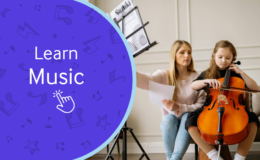
About Course
This course introduces young children (ages 5-7) to foundational math concepts through interactive and engaging activities. The focus is on building a strong understanding of numbers, basic operations, and simple problem-solving skills.
Course Duration
Week 1: Understanding Numbers
Objective: Introduce children to numbers and counting.
Content:
Recognizing numbers 1-10.
Counting objects and matching them to the corresponding number.
Understanding the concept of “more” and “less.”
Activities:
Counting games with objects (e.g., toys, blocks).
Number matching puzzles.
“Number Hunt” around the classroom.
Week 2: Basic Addition
Objective: Teach the concept of adding two groups of objects.
Content:
Introduction to addition using visual aids (e.g., fingers, blocks).
Simple addition problems within 10.
Activities:
Addition games using objects.
“Addition Bingo” with visual aids.
Drawing and solving addition problems.
Week 3: Basic Subtraction
Objective: Understand subtraction as taking away from a group.
Content:
Introduction to subtraction using visual aids.
Simple subtraction problems within 10.
Activities:
Subtraction games with toys or snacks.
“Subtraction Story Time” where children solve subtraction problems within a story.
Practice with subtraction worksheets.
Week 4: Introduction to Shapes
Objective: Recognize and name basic geometric shapes.
Content:
Identifying circles, squares, triangles, and rectangles.
Understanding the characteristics of each shape (e.g., number of sides).
Activities:
Shape sorting games.
“Shape Hunt” around the classroom.
Crafting shapes with paper or clay.
Week 5: Introduction to Measurement
Objective: Introduce the concept of measurement using non-standard units.
Content:
Measuring objects using items like blocks or hands.
Understanding terms like “longer,” “shorter,” “taller,” and “smaller.”
Activities:
Measuring classroom objects with blocks.
“Measurement Scavenger Hunt.”
Comparing lengths of different items.
Week 6: Introduction to Patterns
Objective: Recognize and create simple patterns.
Content:
Identifying repeating patterns in objects, colors, or shapes.
Creating their own patterns.
Activities:
Pattern-making with colored blocks or beads.
“Pattern Walk” to find patterns in the environment.
Drawing and coloring pattern worksheets.
Week 7: Introduction to Time
Objective: Understand the basics of time and clocks.
Content:
Introduction to the clock face (hours and minutes).
Understanding the concept of morning, afternoon, and evening.
Activities:
Clock reading games.
“Time Matching” activity (matching times to daily activities).
Making a simple paper clock.
Week 8: Review and Math Games
Objective: Reinforce all concepts learned through interactive review and games.
Content:
Review key concepts: numbers, addition, subtraction, shapes, measurement, patterns, time.
Fun math games and activities that combine all learned concepts.
Activities:
“Math Relay Race” with different stations for each concept.
Group math games and challenges.
Certificate award ceremony for participation.
Materials Needed:
Counting objects (e.g., blocks, toys).
Visual aids for addition and subtraction.
Shape cut-outs, pattern-making materials.
Non-standard measurement tools (e.g., blocks).
Clocks or clock-making materials.
Worksheets and coloring materials.
Rewards or certificates for participation.








